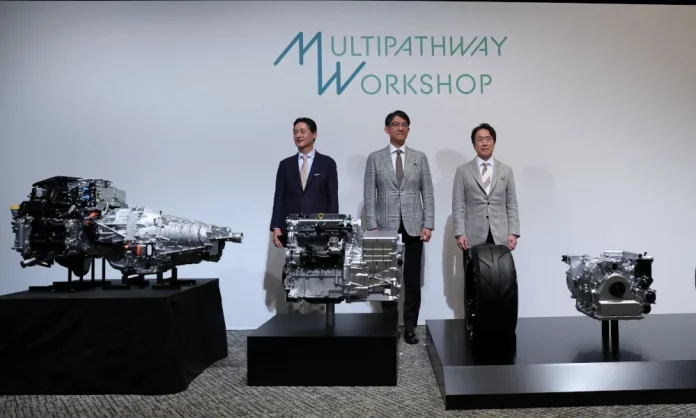Three automotive giants—Toyota, Mazda, and Subaru—have joined forces to develop advanced engines that promise to revolutionize the industry. This strategic partnership aims to address the pressing challenges of electrification, carbon neutrality, and sustainable mobility. As the Pakistani audience eagerly awaits the outcome of this collaboration, let’s delve into the details of why these automakers are coming together and what it means for the future of automotive technology!
The Genesis Of Collaboration!
People at this point would be wondering why would these giants even want to collaborate in the first place!? Clearly they don’t need anything specific from each other, rather its more simpler than it seems:

- Shared Vision: Toyota, Mazda, and Subaru have a shared common vision—to create a greener, more sustainable automotive landscape. By pooling their expertise, they can accelerate progress towards carbon neutrality.
- Complementary Strengths: Each company brings unique strengths to the table. Toyota excels in hybrid technology, Mazda is renowned for its rotary engines, and Subaru is a pioneer in all-wheel-drive systems. Together, they form a formidable alliance that no one can compete with!
- Economies of Scale: Collaborating on engine development allows cost-sharing, research synergies, and faster innovation. By optimizing resources, they can leapfrog into the future.
What Does This Partnership Signify?
Now that we’ve covered as to why they would wish to collaborate, lets discuss what this huge move means for the whole automobile industry!

- Engine Optimization for Electrification: The focus is on creating engines that seamlessly integrate with electric drive units. These power-trains will enhance performance, efficiency, and overall driving experience.
- Carbon-Neutral Fuels: The engines will be designed to run on various carbon-neutral (CN) fuels, including e-fuel (synthetic fuel), bio-fuels, and liquid hydrogen. This commitment aligns with global efforts to reduce greenhouse gas emissions.
- Decarbonizing Internal Combustion Engines (ICEs): While electrification is essential, ICEs will continue to play a role. The collaboration aims to make existing engines more efficient and compatible with CN fuels.
The Peoples Reaction!
Fans look forward to engines that blend the greatest features of electric drive units (ECUs) with the potent performance of internal combustion engines. A wider range of fuels gives customers more alternatives. Drivers will have the freedom to select fuel that is consistent with their beliefs, be it hydrogen, biofuels, or e-fuel. By working together, the supply chains and employment related to engine manufacture are secured for the future to come!
Stay tuned for more automotive news like this; this is your favorite friendly neighborhood gearhead Zayaan, Signing Off!











































